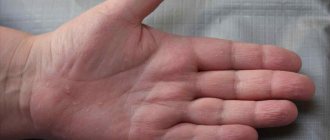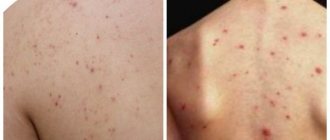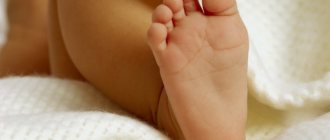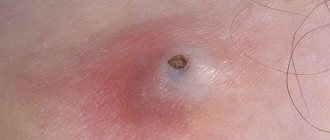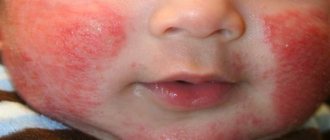Products based on salicylic acid
Salicylic acid gradually dissolves and exfoliates the growth. A patch based on it is the best way to remove a wart on the foot or palm:
- Such a patch will hide the defect itself from the eyes of others. It looks like a regular corn patch, so no one will suspect that there is a wart underneath.
- Provides protection against accidental injury to the tumor. This means that the treatment of warts will take place without complications.
- The salicylic acid patch provides treatment for the wart in one to two weeks. At the same time, the product has a low price.
- How to treat a wart using such a remedy is written in the instructions for it. This will save you from experimenting with your skin, as opposed to using alternative medicine methods.
You can lubricate the growth with an alcohol solution of salicylic acid or Salicylic ointment.
Why do warts appear on the back and how to treat them?
It is quite unpleasant to discover growths on your back that interfere with normal wearing of clothes, sleep, and also bring psychological discomfort. The name for this phenomenon is wart.
A wart on the back is usually benign and can be quickly removed. It is generally accepted that warts are a sign of old age, but about 60% of the population of any age category suffers from them. Warts may appear and then disappear on their own. How to deal with papillomas on the back and whether they are dangerous, we will discuss in the article.
Main types of warts on the back
Today, experts in this field identify several main types of warts, which can most often be found on a person’s back area.
- acanthonic wart;
- adenomatous wart;
- keratonic wart;
- mixed wart.
If a person begins to experience a number of symptoms, then he needs to contact a specialist in this field as soon as possible.
Among these signs we should highlight:
- change in the appearance of the skin in the back area;
- the appearance of neoplasms on it, which begin to increase at different rates;
- if the color of such neoplasms on the back differs from the natural color of the skin.
Specialists will help conduct the necessary examinations of the skin in order to determine the cause of the appearance of tumors. This must be done to avoid the appearance of malignant tumors. Therefore, doctors carry out all the necessary tests and prescribe effective treatment for the patient.
Diagnosis of itchy growth
If the growth causes discomfort, pain, bleeds or itches, you need to go to a dermatologist. To make a diagnosis and determine the type of wart on the dermis, the doctor conducts an examination and, if necessary, sends the patient for tests:
- PCR (polymerase chain reaction) to determine the type of virus and its quantity in the human body. They take fingerprints.
- Histology. Tissue removed from a plantar or other wart is sent for examination to determine its nature and the presence of cancer cells.
Flat, convex tubercles on the dermis, which are often exposed to ultraviolet radiation, are injured, rubbed by clothing or shoes, require special attention.
Warts: photos and types. senile warts, age-related keratomas
Home › Warts › Warts (general article)
Warts are growths on the skin or mucous membranes that form as a result of uncontrolled growth of the superficial layers of the epidermis and papillary layer of the dermis. These are benign neoplasms of a viral nature.
They are formed as a result of infection with various strains of HPV (human papillomavirus). Warts have a tendency to grow and recur and are highly contagious (infectious).
According to WHO, 80% of the world's population is infected with human papillomavirus infection.
Types of warts
These formations are divided into several types, depending on their appearance:
- Flat. One of the most common types of warts. In this case, the formation is a purely cosmetic defect that does not have serious consequences for the body and does not develop into a malignant tumor. Flat warts form mainly on the fingers, palms and shins, but sometimes the entire body is affected by rashes. They cause virtually no discomfort, but they look rather unaesthetic, which makes people often think about removing them.
- Hanging. They usually pop up in the groin, armpits or neck. If the growths are small, they practically do not interfere, but large ones can cause significant discomfort. Such warts are very easy to damage, which can result in heavy bleeding and even infection. It is best to get rid of such growths as quickly as possible.
- Plantar. Warts of this type appear exclusively on the feet: soles, heels or toes; they do not spread to other parts of the body. At first they look like shiny plaques, but quickly turn into rough growths that interfere with walking. Getting rid of them without surgery is quite problematic.
- Vulgar. These rashes most often affect the hands. They do not bring any unpleasant sensations, but they can grow and even unite.
- Acute condylomas. If a person neglects the rules of hygiene, then similar neoplasms may appear in places where moisture accumulates (in the groin area or between the buttocks). To avoid turning into a low-quality tumor, they should be removed immediately after detection.
- Senile. Older people constantly develop these growths. The reason for this is slow metabolism and age-related changes in the epidermis. It is impossible to become infected with them.
We invite you to familiarize yourself with the causes of warts in children on the hands and face, features of treatment at home.
The vast majority of the world's population is infected with papilloma.
Often the disease occurs without visible manifestations, but some factors greatly reduce the immune system, the virus becomes more active, causing warts to grow.
Which type is the most dangerous?
Dangerous types of warts:
- Flat condylomas that appear on the cervix. In 90% of cases of malignant tumors, infection with HPV of a highly oncogenic type was detected. Subject to mandatory removal. The patient must be registered with a gynecologist.
- Peruvian wart - without treatment, the probability of death is 50%. Although the disease is endemic, you should stock up on antibiotics before traveling to the mountainous regions of Colombia or Ecuador.
- Spines - internal horny papillomas are injured when walking. This increases the risk of complications.
- Any wart located in an easily injured area - armpits, groin, foot, elbow, chin. Damage to the growth tissue increases the risk of complications.
- Any formation – a change in size, pain when pressed.
What growths cannot be removed at home?
Although most warts are benign growths, in some cases they are prone to malignancy - turning into cancer.
Any injury or malfunction of the body can trigger the mechanism of degeneration. In addition, some strains of HPV are initially oncogenic, so it is important to determine the type of pathogen, and for this you need to consult a doctor.
The presence of the following symptoms may indicate malignancy of the growth:
- Rapid increase in wart size;
- Sudden change in color (lightening or darkening);
- Pain on palpation and at rest;
- Redness, swelling (indicates an inflammatory process);
- Discharge of ichor or suppuration of growth;
- Intense itching, burning;
- Deep cracks, ulcerations on the surface of the wart;
- The appearance of a white halo on the skin around the tumor.
Remember, such warts cannot be removed on your own under any circumstances. Moreover, the appearance of at least one of these signs should alert you and prompt you to see a doctor.
Today you can get rid of growths quickly and painlessly, in just one session. It is best to remove warts on the face and other open areas of the body using a laser beam or radio waves - after the procedure there are no traces left on the skin. Electrocoagulation is considered a budget option, but it is not worth getting rid of large tumors with its help - scarring is possible. Cryodestruction (nitrogen freezing) deals only with superficial neoplasms - it is not suitable for removing warts from the root.
Subcutaneous warts. Structural features and secrets of deliverance
Whether it is necessary to remove the growth and what method to use for this purpose the doctor will tell you, do not delay in contacting a specialist.
Removal of papillomas
In cases where drug treatment does not produce the desired effect, the papillomas are removed. There are the following methods for getting rid of tumors:
- Liquid nitrogen /cryotherapy/. The papilloma is instantly frozen. As a result, the growth cells die.
- Radio waves /radiosurgery/. The cutting is done using radio waves. At the same time, healthy skin cells are not injured, burns and the possibility of infection are excluded.
- Laser beam /laser therapy/. It is the most popular and painless method.
- Electric current /electrocoagulation/. Removal is carried out using electric power. If necessary, anesthesia is used.
- Surgical method. Used quite rarely. The growth is cut off with a scalpel using local anesthesia. After the operation, scars and scars remain.
- Chemical cauterization. Removal /burning/ using salicylic acid and cantharidin.
Despite the favorable prognosis, after completing a course of treatment, it is worth considering that even if the papilloma is removed, HPV continues to exist in the body, and relapse is possible at any time. You cannot get rid of papillomas on your own. Self-medication usually leads to infection and other serious consequences.
A practicing dermatovenerologist will tell you about the intricacies of removing papillomas:
Treatment of warts on the abdomen with medications
In the photo are drugs for warts on the stomach
Conservative treatment of warts on the abdomen has two directions. The first is drug destruction of formations, the second is the fight against the virus and maintaining immunity.
Since the skin on the abdomen has a dense epithelial layer, destruction can be carried out even with the most aggressive pharmaceutical drugs:
- Verrucacid. Cauterizes warts, is easy to apply, and works after several procedures. A bottle of the drug costs only 209 rubles. In Ukraine, analogues of the drug are more popular - Ferezol or Solcoderm. Their price is also low, and their effectiveness for small warts on the abdomen is high.
- SuperClandestine. It acts as aggressively as the juice of the celandine herb; the cauterizing properties are associated with the high concentration of alkali in the composition. The product must be used very carefully, as it can burn healthy areas of the skin. The price of the drug in Ukraine is 22 hryvnia, and in Russia - 46 rubles.
- Panavir. It has a pronounced antiviral effect and can be applied to the sites of warts and after their removal as a prophylactic agent. The gel costs 337 hryvnia in Ukraine, and 130 rubles in Russia.
To maintain immunity, antiviral and immunostimulating drugs are taken:
- Amiksin or Cycloferon to activate the body's protective functions. Such drugs cost from 300 hryvnia (800 rubles).
- Panavir or Isoprinosine as an antiviral. The drugs cost from 1,500 rubles (600 hryvnia).
Note! The complex of drug therapy should be compiled exclusively by a doctor. How quickly a wart on the stomach will go away depends on the correct combination and dosage.
Why is itching around warts dangerous?
If the wart is itchy, you should not comb it, rip it off or otherwise influence it; these actions often lead to the appearance of scars and welts, the spread of the virus to healthy areas of the skin and the appearance of new formations
No matter how strong the itching sensation, it is strictly forbidden to scratch warts or papillomas. The result of this may be a violation of the structure of the neoplasm, after which it may change shape, color, structure, size. In addition, the following dangerous factors can be identified:
- Activation of the vital activity of the virus leads to intoxication of the human body and accelerated damage to the skin.
- Against the background of weak immunity, a secondary infection may occur, which provokes an inflammatory process in the wart itself and surrounding tissues through scratching the skin.
- Violation of the integrity and structure of the wart can trigger the activation of the papilloma virus, which over time can cause cancer.
What to do if you have already scratched a wart?
After this, you should consult a dermatologist as soon as possible, since the risk of infection remains high and the affected injured area must be monitored. The doctor will also prescribe medication and means for further surface treatment.
Oils
When looking for a solution to how to get rid of warts using folk remedies, people are offered to use various oils. It goes without saying that simple vegetable or olive oil will not give results, because in this case we are talking about medicinal plants. For example, you can remove warts with tea tree oil.
We invite you to familiarize yourself with Badyaga Forte Gel: reviews, indications, instructions, composition
To do this, you need to lubricate the papilloma with it several times a day. If you plan to treat a wart in a child or adult with sensitive skin, you will need to dilute the product with water or regular vegetable oil in equal proportions. Otherwise, the burning sensation will cause severe discomfort.
Castor oil can be used not only to remove warts, but also to prevent their reappearance. To do this, you will need to make a 10% solution of castor oil based on water, and then treat the areas where the tumors were located before removal three times a day.
Alternative medicine methods
If the growth is constantly itchy, you can try using traditional methods, but you should first consult a doctor.
The most well-known methods are:
Regular garlic will help fight warts
- Steam 1 tablespoon of chamomile with a string in a glass of hot water, leave for 2 hours. Dip a piece of cloth into the resulting infusion and attach it to the affected area as a bandage.
- Place the cut side of a clove of garlic on the growth and secure with a band-aid.
- Steam your feet (for plantar warts) in warm water with soda, then remove the keratinized layer with pumice.
- Brew 3 tablespoons of wormwood flowers in 200 g. boiling water, leave for 2-3 hours and make compresses. This method will help get rid of the growth and prevent itching.
- Lubricate the damaged area with celandine juice. If the use of the plant caused irritation and pain, treatment should be stopped.
- Press Kalanchoe leaves onto the new growth for one week.
Complications
No method of removing warts guarantees the complete absence of complications. There is always a risk:
- relapse, that is, re-formation of the growth;
Warts on the back are considered the safest of all types of growths. But they cannot be ignored either.
You should not self-medicate. For this purpose, there are special clinics where dermatologists work. The appearance of health problems signals that immunity is beginning to decline, which means it is necessary to restore it.
Let's sum it up
Many people live with warts and papillomas, not even suspecting that they are already infected with this dangerous thing.
An unpleasant and painful itching of a protruding growth most often indicates inflammation, mechanical damage and tumor growth. In this case, measures must be taken immediately, since scratching the wart can lead to inflammation, bleeding and the spread of the human papillomavirus throughout the body.
Patients often ask if warts itch when they appear.
They are interested in whether this is a normal symptom or a sign of complications.
It is usually normal for the skin around the wart to itch.
Itching is one of the common symptoms accompanying their appearance.
It is estimated to occur in 40% of patients.
While the remaining 60% of people develop warts without itchy skin.
Sometimes the wart itches very slightly and does not cause significant discomfort to the patient.
In other cases, the itching is severe.
In this case, scratching appears at the location of the formation.
A secondary infection may occur.
The wounds formed as a result of scratching become infected with bacteria.
There is redness and purulent discharge.
Let's talk about what provokes itching during the growth of skin formations and in the event of complications developing.
And also what to do in such situations.
Location
There is no specific place of manifestation and reason for the appearance of small warts on the body; they spread everywhere. Particularly affected are those areas of the skin where it is easiest for bacteria to penetrate or where the skin is more delicate and more susceptible to damage. From the point of view of scientific findings, such evaluation criteria differ when warts appear.
Most common:
- Carpal and elbow part;
- Kneecaps, feet, fingers;
Not so often:
- Warts on the back;
- cheeks and forehead;
- ankle, hands.
The most rarely affected are:
- buttocks and thighs;
- shoulder area;
- shin, neck.
It is practically impossible to see warts on the hairy parts of the body, warts on the stomach and on the body in general. The full elimination of the problem begins as soon as the first growth is visible.
I also recommend reading these materials:
Attention: if the doctor did not answer your question, then the answer is already on the pages of the site. Use the search on the site.
The appearance of warts on the body during life occurs in almost every person. A malfunction of the immune system or the appearance of a new virus in the body provokes the appearance of these benign skin formations. Recently, science has begun to identify certain types of warts as risk groups, since they are caused by oncogenic viruses. Therefore, it is worth carefully diagnosing and, if in doubt, seek advice from a dermatologist.
Features of certain varieties
Many patients ask to talk about the types of viral tumors. The information will be useful to anyone who wants to understand how diverse skin growths are, how to recognize one or another type of warty formation in the form of papules, threads, nodules and tubercles.
Warts on the body - types, photos and features:
- A pedunculated wart (see photo below). The second name is hanging wart. Found in the groin area, armpits, and neck. If there is a high risk of injury to the formations, it is better to remove them in the clinic.
- Wart vulgaris (photo shown above). The formation has another name - a common wart. A common variety, often smaller warts appear near the “main” formation. With weak immunity, bumps appear on the fingers, near the nails, on the head or neck.
- Internal wart . Difficult to diagnose, the body of a flat plantar wart is hidden in the thickness of the epidermis. Many patients note that when walking and rubbing, the pain is stronger than with a convex growth. The main reasons for the appearance: poor foot hygiene, poor-quality shoes, excessive sweating of the feet, dirty tights or socks. The HPV virus actively develops with weak immunity, the action of one or more of the above factors.
- Herpes wart . Patients often mistake a wart on the lip for a manifestation of the herpes virus. Warty formations on the lips are rare. The main reason is infection with papillomavirus, provoking factors: poor immune defense, injuries to the mucous membranes of the lips, infections in the oral cavity. Small flesh-colored tubercles are located on the inner border of the lips, less often visible from the outside.
- Liquid wart . Small protrusions on the body of a yellowish tint have a round shape. Neoplasms are classified as flat warts. Small bumps are common in teenagers.
- Red wart . The second name is hemangioma. Red warts on the body do not interfere, do not provoke discomfort, there is no pain or itching. Size – from 1 to 5–6 mm, less often – up to 8 mm or more. Benign growths often appear after 40 years.
- White wart . This type of benign formation often occurs in adolescents and young men. Flat papules with a slightly noticeable yellow tint sometimes darken, keratinization appears, warty formations cause inconvenience, and worsen aesthetics. If it is located in an inconvenient place or has a noticeable cosmetic defect, it is recommended to remove the wart on the finger at home. You can also find out about 3 ways to treat warts on your finger here.
- Dry wart . The surface of the vulgar variety of skin outgrowths often cracks and becomes covered with villi. The neoplasms are hard to the touch. The body of the wart is dry, uneven, and looks like a mushroom cap.
- Blackened wart . The formations are often called differently: “seborrheic wart.” Flat papules appear on the body with age-related changes and metabolic disorders after 40–45 years. By the old age, warty growths noticeably worsen the appearance, often covering a large area of the back, arms, face, and neck.
- The wart is transparent . Many patients do not know how to distinguish large white pimples from benign lesions. Differences: the warty growth is rough, rough to the touch; when pressure is applied to the surface of the tubercle, a clear or cloudy liquid does not flow out, as when squeezing out a pimple.
Now you know what all types of warts are on the skin, photos and names.
If a wart appears, you should also know:
When identifying benign formations , do not take rash steps; refuse cauterization, cutting, dissolving tubercles or papules with caustic compounds . Only a dermatologist will provide qualified assistance and remove warty growths with the least risk.
For more information about warts on the human body, watch the following video.
>
Solcoderm
When deciding how to quickly get rid of warts, you should pay attention to this drug. It is based on four acids: nitric, acetic, oxalic and lactic. Due to this composition, the drug is not recommended for home use: all manipulations must be carried out under the supervision of a doctor. In addition, to achieve maximum efficiency, you will need to follow all the rules of the procedure:
- Steam the wart to soften the affected tissue and remove dead skin particles.
- Dry the treated area thoroughly.
- Apply the drug to the wart itself, using a special applicator.
- Wait a few minutes until the wart turns yellowish or pale gray. This indicates that the drug worked. If there is no change in color, you will have to repeat the process of applying Solcoderm.
After using the drug, you will need to mummify dead tissue. To do this, you need to treat the wart with alcohol after water treatments. Soon the growth will turn into a crust, which under no circumstances should be peeled off. It must come off on its own, or an ugly scar will remain at the site of the growth.
Senile warts
The appearance of senile warts is not associated with the activity of the virus. Such growths (keratomas) are formed as a result of uncontrolled division of epidermal cells.
The growth of the surface layers of the epithelium is provoked by hormonal disorders associated with aging of the body and prolonged exposure to ultraviolet radiation.
Pigmented keratinized plaques of various sizes and shapes appear in the plural on the body, arms, neck, and back of the hand.
A photo of senile warts (age-related keratomas) clearly shows their features and difference from other growths of a viral nature. Such formations can grow over time, and if damaged, bleed and become inflamed, which increases the risk of malignant degeneration.
We suggest you familiarize yourself with Shingles: how long does the disease last?
If any suspicious growths appear on the skin or mucous membranes, you should consult a dermatologist. After the examination, the specialist will make the correct diagnosis, determine the type of tumor and propose a treatment regimen. The most common types of warts and papillomas, as well as their photos, can be found on the corresponding sections of the site.
Most often, dermatologists advise removing unaesthetic growths with medication or using hardware procedures. Popular methods of treating any tumors of different localization are described in detail here: “Removal of warts.”
In children
Treatment of warts in children:
- Ointment prescribed by a dermatologist. Treat the wart itself directly, after steaming it, wait until it is completely absorbed. The effect occurs from two weeks to two months. Tebrefenovaya, boladnotonovaya, oxolinic ointments.
- Medical patch for the treatment of warts. It is impregnated with salicylic acid. The advantage of the patch is that the affected area is covered. This does not prevent the child from playing. It also protects against bacteria entering the wound, thereby blocking the further spread of the virus.
- Antiviral therapy.
- Use medications to protect the immune system.
- Conduct preventive vitamin courses.
Tips from traditional medicine:
- Fresh juice of celandine, dandelion or garlic. Treat the wart several times a day.
- Dough with vinegar essence. Mix two drops of essence with flour. Cut a small hole in the patch equal to the size of the wart. Glue the blank, thereby protecting healthy areas of the skin. Place a piece of the resulting dough into the hole and secure it on top with another small piece of plaster. It is better to carry out the procedure at night. The result is possible as early as the morning.
- Lotions from a decoction of wormwood.
If new tumors appear after removal, you should think about the state of the baby’s immunity. It is important to carefully consider the child’s nutrition and spend more time walking in the fresh air. If the body's defenses work at full strength, knowledge of how to remove a wart from a child will not be needed. The body will be able to cope with the virus on its own.
Prevention
Compliance with preventive measures will avoid infection and activation of HPV.
- take measures to strengthen the immune system;
- stop smoking and drinking alcohol;
- exercise;
- adhere to a healthy lifestyle and proper nutrition;
- avoid promiscuous sexual intercourse;
- undergo routine medical examinations;
- timely treatment of infectious diseases;
- Experts recommend getting vaccinated against HPV.
source
Removing warts on the stomach
In cases where a wart on the stomach is located in places of frequent contact with clothing or a belt, doctors recommend removal. However, there are a number of signs that make surgery not recommended, but necessary:
- the formation begins to increase in size;
- the number of warts has increased;
- the color began to darken and the shape began to deform (from smooth round to shapeless);
- The wart began to bleed, became inflamed, and hurt.
Removal can be carried out using the following methods:
- Cryodestruction - using liquid nitrogen, even the deepest formations are removed. The price for the procedure is 300 hryvnia in Ukraine, 900 rubles in Russia. Suitable for removing large single warts on the abdomen. See indications for removing papillomas with liquid nitrogen.
- Electrocoagulation - cauterization using electric current, costs around 300 hryvnia in Ukraine, 700 rubles in Russia. May leave behind a scar.
- Laser and radio wave destruction are the most modern methods for removing warts on the stomach. After removal, there is a low probability of bleeding, and scarring of the tissue goes unnoticed. The procedure costs from 600 Ukrainian hryvnia, 2000 Russian rubles.
The method of surgical excision is used only if the development of cancer is suspected. The reason is simple - scarring and a long recovery period.
Basic treatment methods
If a tumor is suspected of being oncogenic, located in an inconvenient place, or has deteriorating aesthetics, the patient thinks: “Is it possible to remove warts?”
A responsible approach is required, consultation with a dermatologist and cosmetologist.
Independent removal of benign skin growths using questionable methods often provokes complications.
The following methods will help you get rid of nodules, papules, and bumps::
- radio wave removal;
- surgical removal;
- tablets and injections for warts;
- treatment with special ointments and solutions (Viferon, SuperClean and hydrogen peroxide);
- the use of a special patch called “Salipod”;
- home cryotherapy (preparations “Cryopharma”, “Wartner Cryo”);
- photodynamic therapy;
- lapis pencil;
- traditional methods (celandine, garlic, potatoes, iodine, acetic acid, castor oil and even thread).
Other effective folk and pharmacy remedies for skin growths can be found here.
Should I delete them?
Small warts on the body are not always removed. They often go away on their own after a few weeks, especially in the case of children. But, before removing this problem, you should seek advice from a specialist. It is also necessary to monitor your body and the formations on it; you must consult a dermatologist if:
- A wart on the body changes shape or color;
- It becomes inflamed and bleeds;
- Changes sizes;
- Worries and hurts;
- Appear throughout the body;
- Aesthetically it looks ugly.
Removing warts involves using one of the common methods. Removal using a laser is considered less traumatic and effective. More painful ones are electrocoagulation, cryotherapy (nitrogen cauterization).
Small growths on the skin in the form of warts are burned with natural lotions. For example, they actively use celandine juice, potato peels, garlic gruel, apples, etc. But a special method should be used for each variety, therefore, before getting rid of warts, you need to be examined by a dermatologist.
How to distinguish from a nevus?
Often, patients at an appointment with a dermatologist claim that there are too many moles on the body. Upon examination, the doctor finds out that some of the neoplasms are warty growths, and not birthmarks.
| Main differences | Warts | Nevi |
| Surface | Uneven, rough, hard, often dry, sometimes cracked, cauliflower-like | Smooth, soft touch |
| Elevation above the skin | Eat | In most cases no |
| Form | Oval, imperfect, often with torn edges | Mostly round, smooth edges |
| Color | Grayish-white, yellow-brown, translucent with a milky tint, flesh-colored, brown, yellowish, almost black, dark brown, grayish | Vascular form (red), pigmented (brown), blue moles |
| Color change | Gradually changes depending on the stage of development, sometimes from light, milky white, to gray, yellowish, dark brown | It is not the color that changes, but the shade (more often, the nevus darkens) |
| Internal structure | Sometimes thread-like formations and black dots are visible | There are no inclusions or “threads” |
| Oncogenicity | Low risk of degeneration into cancer | Cases of degeneration into malignant formations are more common |
| Constancy | With increased immune defense and elimination of negative factors, benign warts often disappear on their own as suddenly as they appeared | Moles appear in the first year of life (more often at a later age) and do not disappear on their own |
| Location | They can grow together and form colonies (maternal “individual” and “children”) | Even with a large number of moles, they are always separated from each other |
We also found out how warts differ from papillomas. You can find out all the differences between skin growths here.

